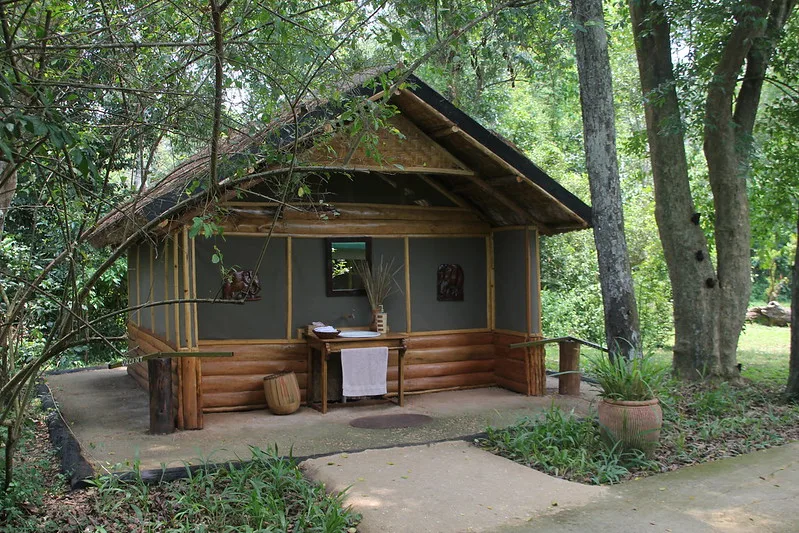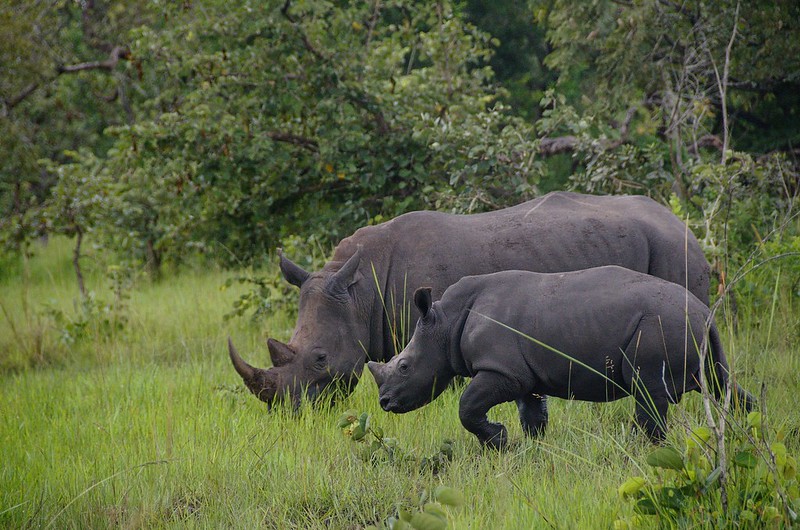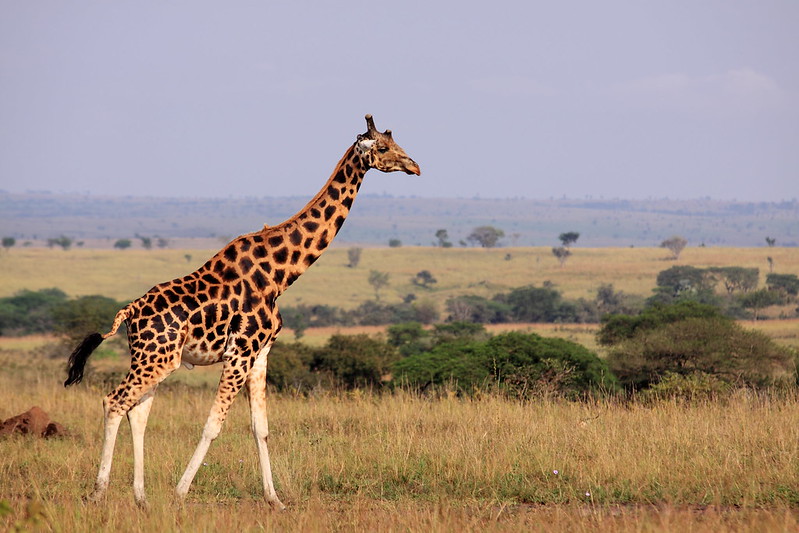Vous êtes bienvenus, aventuriers courageux, dans les merveilles sauvages de l'Ouganda, où l'appel de la…
Safari Activities in Kibale forest national park
Safari Activities in Kibale forest national park
Kibale Forest is located in western Uganda between the districts of Fort Portal and Kasese. The park has 766 km2 of evergreen forest. The travel from Kampala takes around 6 hours, while the drive from Kasese to Kibale Forest National Park takes about 2 hours.
Activities in Kibale forest national park provide visitors with a variety of activities to participate in during their visits to the park. With all of the exciting and interesting activities available in the park, visitors are assured of having the finest and most enjoyable safari in Kibale forest national park. Kibale Forest National Park boasts the greatest range of animal species, including chimp trekking and chimp habituation experiences, as well as red and black colobus monkeys, L-hoest monkeys, white monkeys, and red-tailed monkeys, among many more.
Once you visit Kibale forest national park, there are many activities to do and sights to view to make your safari unforgettable. Chimp trekking, chimp habituation, nighttime forest walk, Bigodi wetlands sanctuary, bushcraft for children, bird viewing, cultural interactions, nature walks and treks, Amabere Ga Nyina Mwiru, crater lakes, and other activities are available. These activities provide you with the most amazing safari to Kibale Forest National Park.
Kibale National Park Safari Activities
Chimpanzee trekking is a popular activity in Kibale Forest National Park. It is wandering through the forest in search of chimps. This activity is mostly done on habituated chimp families, and only visitors with chimp permits are permitted to enter the forest to watch the chimps. From the moment you encounter the gorillas, you are one with them. Kibale is home to a significant number of chimps, and tourists who participate in this activity have a 99% chance of seeing one every day.
Kibale Forest National Park is the most popular tourist site in East Africa for chimp trekking. The forest is home to about 1500 chimps, allowing for chimp trekking activities. Every day, chimp trekking in Kibale forest takes place in two shifts. The first shift begins in the morning at the Kanyanchu information center, which is located in the heart of the park. The morning shift begins at 8:00 a.m. with a briefing at the park headquarters at 7:00 a.m., and the afternoon shift begins at 2:00 p.m. and lasts around 2-3 hours. The regular activity can last 30 minutes to half an hour of time hunting for chimp families, and when you encounter the chimps, You will spend one hour with them to observe and study their behavior, and for early risers, you will have the opportunity to see chimps engaging in everyday tasks like as creating nests, relaxing, feeding young ones, patrolling, and many more. Chimpanzees in the wild may live up to 40 years while chimps in captivity can live up to 60 years. Males are larger than females and can weigh up to 150 pounds. While chimp trekking, you may also see red colobus monkeys, blue monkeys, hoest monkeys, bush infants, and baboons, among other primate species.
Chimpanzee habituation is the process of getting chimps used to seeing humans. During chimp habitation, researchers, scientists, rangers, and travelers participating in the activity visit a specific chimp family on a daily basis until they are used to seeing humans and can then be opened up for the trekking. Chimp trekking, as well as environmental hikes, are available at the Kanyanchu information center. Chimpanzee trekking is greatest in March, April, November, and December when there is little or no rain.
Visitors participating in chimp trekking get the opportunity to visit the chimpanzees in their natural habitat; this is a full-day excursion that includes studying the chimps’ behaviors, feeding, and other activities. Not only that, but the unique aspect of chimp habituation is that you become an active participant in the habituation process as well as simply seeing the chimps.
Birding
Kibale Forest National Park is home to around 370 bird species, including the white-winged warbler, papyrus Gonolek, African pitta, African pied wagtail, common fiscal, thin, billed weaver, and African pitta. Among the many species are tropical boubou, pin-tailed whydah, blue-breasted kingfisher, blue-headed bee-eater, and crowned eagle. Visitors may see a range of various bird species in their natural habitat while bird watching. The activity begins at 7:00 a.m. at the Kanyanchu Information Centre, thus an early morning rise is required for the program to begin. The greatest season for bird viewing is from March to May and from September to November, when many migrating species may be seen in this area.
Bigodi wetland sanctuary is located immediately outside Kibale forest national park along Magombe swamp, 6 kilometers from the Kanyachu information center Kibale forest national park. The Bigodi wetland sanctuary is managed by the community that surrounds the park. Locals are educated to be tour guides for wetland activities. On the Bigodi walk, you will be able to see a variety of creatures and species, including butterflies and over 138 recognized bird species. African pied wagtail is a significant bird seen here. Common. Fantastic blue turaco. Common. Whydah with a pintail. Common. Weaver with a slender bill. Common. Boubou tropicale. Common and eight primate species, including red colobus monkeys, blue monkeys, and vervet monkeys, among others, and animals, including; Mongooses, bushbucks, warthogs, and other animals are among them. The Bigodi wetland walk lasts 2-4 hours around the marsh pathways and allows guests to see various creatures, primates, and bird species, among others.
Cultural interactions; This activity allows travelers to interact with the locals that reside in the Kibale Forest National Park, including cultures like Bakiga and the Batooro. During this tour, the locals will demonstrate various activities like traditional dances, art and craft, and weaving, which is largely done by the ladies who live surrounding Kibale National Park. Your participation in this activity, as well as the cost paid, benefits the development of the communities surrounding Kibale Forest National Park.
Bushcraft Children Activities; the minimum age for chimp trekking is 15 years, and anyone under that age is considered a child and will not be permitted to trek chimps, but there are lots of things for children to do and see while their parents are on chimp trekking. The rangers will lead the youngsters through the forest’s treasures, pointing out fauna, plants, trees, birds, and monkeys.
Kibale Forest is one of the rare sites where children may attend Bushcraft workshops and activities that allow them to explore the forest and have fun while in Kibale Forest national reserve. We also make certain that your children are accompanied by a good and kid-friendly driver to ensure that they are comfortable and have a wonderful time during their activities in the forest. Travelers who want to visit Uganda with their children are recommended to arrange this excursion in advance so that early preparations may be made.
Nocturnal forest walks in Kibale forest are an activity that takes place at night after supper in your lodge, and you will be escorted by an organizer who carries a flashlight for the convenient sight of creatures such as push infants, Pottos, forest cats, and various forest birds, among others. The forest is so peaceful at these hours, and the animals have retired to their sleeping nests, so it’s simple to see them. Guests who participate in this activity must bring boots, long pants, a long-sleeved shirt/blouse, a cap, a water-resistant jacket, water, and energy-giving snacks. The ranger guide will lead you along the trails with a spotlight to allow you to see the animals dark.


